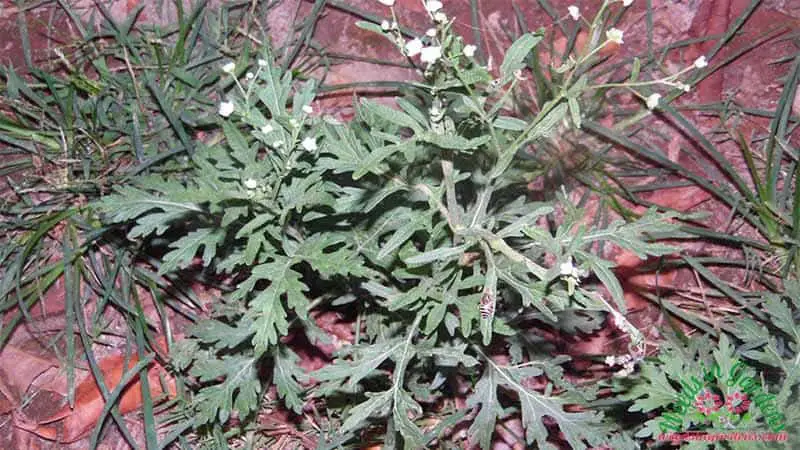Carrot Grass (also known as congress grass) is one of the most noxious invasive weeds in the world. Congress grass is known as a widely spreading weed adversely affecting crop production. It not only harams crops but also livestock and even humans. But I have become surprised knowing that, this toxic plant has some traditional as well as homeopathic and allopathic medicinal uses.
Common names
Carrot grass, wild carrot weed, white top weed, congress grass, santa maria, altamisa, star weed, bitter weed, wild feverfew, white top, gajar ghas, gajar gavat, chatak chandani, kaamgressu gida, false ragweed, ragweed parthenium.

Scientific name
The scientific name of carrot grass is Parthenium hysterophorus.
Growth habit
- Height: 1.5 ft. to 5 ft.
- Life span: Carrot grass is an annual plant.
- Plant type: Herbaceous, branched weedy plant.
- Leaves: Leaves of carrot grass look like leaves of the carrot plant. Leaves are hairy and alternately arranged on stems.
- Flowers: Flower clusters are present on top of the plant. The flowers are tiny and white.
Habitat
Carrot Grass or Congress grass is a common weed of Southeast Asia (mainly in Bangladesh and India), Africa, Australia, and the tropics of America.
Medicinal uses
In different regions of Asia, Central America, and the West Indies, Carrot grass is traditionally used for its medicinal values. But because of its toxicity, please avoid taking it directly.
- Carrot grass or congress grass is traditionally used to get rid of dysentery.
- Extracts of this plant are traditionally used externally in case of some skin diseases.
- Fleas are very annoying parasites of pet animals like dogs, cats, rabbits, etc. They may also transmit viral/bacterial diseases (e.g., plague). Carrot grass is also used as a flea repellant.
- Scientists have found medicinal elements against Hepatic amoebiasis (liver infection by Entamoeba) in carrot grass extracts.
- Carrot grass can cause allergies in the human body. The strange news is that in homeopathic medicine, extracts of carrot grass are used to treat this allergy.
Carrot grass toxicity
- Parthenin, a highly toxic chemical, is present in carrot grass.
- Parthenin can cause fatal respiratory problems in humans.
- Parthenin toxicity of carrot grass also causes fatal respiratory problems in cattle and other domestic animals.
- Contact with carrot grass cause severe allergy to the human body. So, avoid this plant.

Allelopathic effect on crops and other plants
- Other plants can not grow near carrot grass. This plant secrets some biochemicals that prevents normal seed germination and growth of nearby plant species.
- The allelopathic effect of Parthenium hysterophorus significantly reduces crop production.
Control of carrot grass
- Uprooting carrot grass by hand is the best way to control carrot grass.
- Chemical control: Paraquat herbicide effectively kills carrot grass at its early stage. But chemical control should be avoided as it harms the environment.
- The use of biological control agents is found effective against carrot grass.

Scientific classification of carrot grass
| Kingdom | Plantae |
| Division | Tracheophyta |
| Class | Magnoliopsida |
| Order | Asterales |
| Family | Asteraceae |
| Genus | Parthenium |
| Species | P. hysterophorus |
